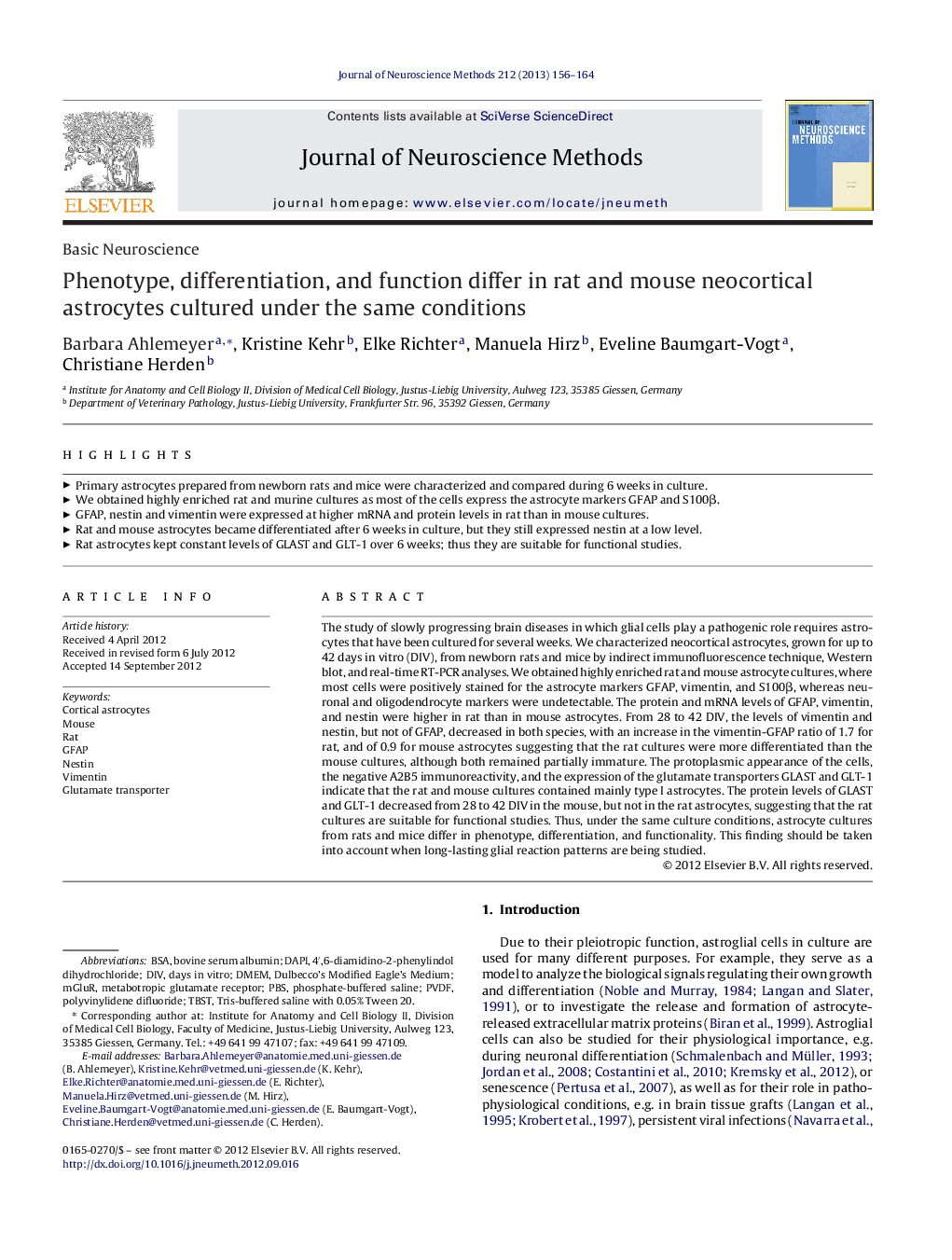| Article ID | Journal | Published Year | Pages | File Type |
|---|---|---|---|---|
| 4335270 | Journal of Neuroscience Methods | 2013 | 9 Pages |
The study of slowly progressing brain diseases in which glial cells play a pathogenic role requires astrocytes that have been cultured for several weeks. We characterized neocortical astrocytes, grown for up to 42 days in vitro (DIV), from newborn rats and mice by indirect immunofluorescence technique, Western blot, and real-time RT-PCR analyses. We obtained highly enriched rat and mouse astrocyte cultures, where most cells were positively stained for the astrocyte markers GFAP, vimentin, and S100β, whereas neuronal and oligodendrocyte markers were undetectable. The protein and mRNA levels of GFAP, vimentin, and nestin were higher in rat than in mouse astrocytes. From 28 to 42 DIV, the levels of vimentin and nestin, but not of GFAP, decreased in both species, with an increase in the vimentin-GFAP ratio of 1.7 for rat, and of 0.9 for mouse astrocytes suggesting that the rat cultures were more differentiated than the mouse cultures, although both remained partially immature. The protoplasmic appearance of the cells, the negative A2B5 immunoreactivity, and the expression of the glutamate transporters GLAST and GLT-1 indicate that the rat and mouse cultures contained mainly type I astrocytes. The protein levels of GLAST and GLT-1 decreased from 28 to 42 DIV in the mouse, but not in the rat astrocytes, suggesting that the rat cultures are suitable for functional studies. Thus, under the same culture conditions, astrocyte cultures from rats and mice differ in phenotype, differentiation, and functionality. This finding should be taken into account when long-lasting glial reaction patterns are being studied.
► Primary astrocytes prepared from newborn rats and mice were characterized and compared during 6 weeks in culture. ► We obtained highly enriched rat and murine cultures as most of the cells express the astrocyte markers GFAP and S100β. ► GFAP, nestin and vimentin were expressed at higher mRNA and protein levels in rat than in mouse cultures. ► Rat and mouse astrocytes became differentiated after 6 weeks in culture, but they still expressed nestin at a low level. ► Rat astrocytes kept constant levels of GLAST and GLT-1 over 6 weeks; thus they are suitable for functional studies.
